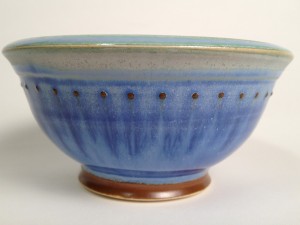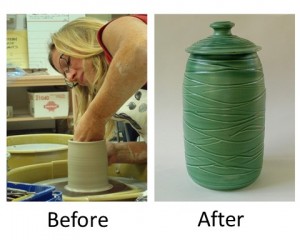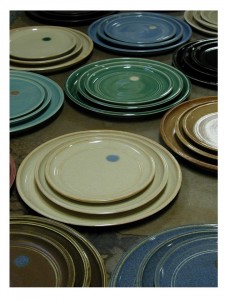There has been a lot of attention given in this blog and elsewhere to this idea of marketing becoming more "scientific." And for good reason - because it's actually happening. It's all about big data, digitization, the importance of search, the empowered (social) consumer, the Internet of Things, and how marketing analytics is enabling ever-important customer centricity.
All those developments have huge implications and it's helpful to explore them and find the right ways to capitalize on the opportunities.

At the same time, I think it's worth considering how the art of marketing continues to matter today, just as it made a difference in the past. This thought came to me as I participated in a group discussion just this week that included writer, speaker and strategy consultant Brian Vellmure.
One of Brian's points was that marketers today have to contend with unprecedented complexity in everything we do, to the point that all marketers share the impulse to want to be the master of our environments - particularly of the customer journey and the customer experience.
His point is that "mastery" in that regard is aspirational, considering how marketers actually have less control of the brand and the customer experience than we've had in the past. But there is great value in how we provide our customers with the ability to
Orchestrate each phase of the customer journey
so that the intended customer experience
is what actually happens.
Of course, the more complex the buying process, the harder that is to achieve. And that's when I had my epiphany about the art of marketing.
 I happen to be married to an artist - a potter named Lauren Brockman. And like many couples, pottery is a shared interest for us. But she is much better at it than I am for one important reason - she can accurately create a bowl or mug she envisions, even after a multi-step process with many potential points of failure.
I happen to be married to an artist - a potter named Lauren Brockman. And like many couples, pottery is a shared interest for us. But she is much better at it than I am for one important reason - she can accurately create a bowl or mug she envisions, even after a multi-step process with many potential points of failure.
I simply cannot do that consistently, and the difference is all about the artist. I may know the science of the glaze compositions, firing temperatures and other details, but I have not fully mastered all parts of the process. As a result, I don't always end up with what I had in mind.

And two aspects of pottery make it unique among art forms:
1. It requires precision and scientific approaches, and
2. There are multiple phases between concept and the finished product with critical points of failure:
- Choice of clay matters based on how the piece will be used, and the amount of clay determines the size of the piece.
- Removing all the air bubbles from the clay matters because trapped air may make it shatter in firing. Unburst air bubbles can also hold moisture that will heat the mug or bowl in a microwave more than the food or beverage it contains.
- Usage also determines the combination of glaze and clay body due to the chemical composition of the glazes. Cobalt and copper can deliver beautiful blue, red and green colors but are toxic and need to be covered in a clear glaze for food use. Precise proportions are needed for intended results.
-

You need to know some chemistry to be a good potter. Firing the clay to 1,600° - 2,300° F shrinks different clay bodies at different rates, so precise amounts and temperatures are needed to get a uniform set of dishes or mugs, for example.
- Removing or allowing oxygen in the kiln will turn your copper-based glazes either green or red.
- The piece needs to be formed well so handles fit the hands, so the pitcher pours cleanly, and frankly so that it's aesthetically pleasing. People just won't buy ugly pots.
I can go on and on about how successful pottery is an important blend of scientific process and artful skill, but I think I've made my point. And it applies to marketing because the ability to deliver customer experiences as intended comes from an evolved marketing process that blends scientific precision with artful composition and execution. Both elements are important.
As my colleague Rachel Alt-Simmons illustrated in her last post,
When science gets ahead of art, you can have the best data in the world but what matters is how well you use it.
So, while we all embrace the science of marketing analytics and appreciate how it improves our marketing, let's not lose sight of how quickly less-than-stellar artistry can sabotage your efforts. We've all seen bad email subject lines, poorly matched images, confusing web pages, cluttered layouts, or inappropriate tweets.
We know what to do - don't we?

2 Comments
I really enjoyed your post and completely agree with the point are making.
Thanks for such a well written and thoughtful piece.
Thanks, Michelle! I really enjoyed writing the post, and especially when the epiphany hit me in the middle of the meeting. I feel so fortunate to be a marketer at this exciting time.
Cheers!
JB